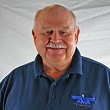|
 Academy of Model Aeronautics (AMA) president
Rich Hanson published an editorial column
in the April 2017 issue of Model Aviation
titled, "How high can I fly?) Ok, more correctly it should have asked, "How high may I fly?" since it
addresses the oft-asked question about what altitude limit is imposed on model aircraft. Mr. Hanson
does a great job explaining the situation, and points out that the current 400-foot limit has been on
the books with the FAA since at least Academy of Model Aeronautics (AMA) president
Rich Hanson published an editorial column
in the April 2017 issue of Model Aviation
titled, "How high can I fly?) Ok, more correctly it should have asked, "How high may I fly?" since it
addresses the oft-asked question about what altitude limit is imposed on model aircraft. Mr. Hanson
does a great job explaining the situation, and points out that the current 400-foot limit has been on
the books with the FAA since at least
 1972. He refers
to a full-page notice to model airmen on page 49 of the November 1972 issue of
American Aircraft Molder,
the AMA monthly publication that preceded Model Aviation. Since the page was not included in
the editorial, I have scanned and posted it below. Indeed, the FAA set a 400-foot altitude rule as early
as 1972. Then, as now according to Mr. Hanson, 400 feet is a basic guideline that may be superseded
under appropriate circumstances. Thank you, President Hanson, for brining that to our attention! 1972. He refers
to a full-page notice to model airmen on page 49 of the November 1972 issue of
American Aircraft Molder,
the AMA monthly publication that preceded Model Aviation. Since the page was not included in
the editorial, I have scanned and posted it below. Indeed, the FAA set a 400-foot altitude rule as early
as 1972. Then, as now according to Mr. Hanson, 400 feet is a basic guideline that may be superseded
under appropriate circumstances. Thank you, President Hanson, for brining that to our attention!
Model Aircraft Operating Standards
Department of TransportationFederal Aviation Administration
1. PURPOSE
This advisory circular outlines safety standards for operators of model aircraft, and encourages
voluntary compliance with these standards.
2. BACKGROUND
Attention has been drawn to the in-crease in model aircraft operations, and the need for added caution
in the case of free-flight and radio-controlled types to avoid creating a noise nuisance or a potential
hazard to full-scale aircraft and persons and property on the surface.
3. OPERATING STANDARDS
Modelers, generally, are concerned about, safety and do exercise good judgment when flying model
aircraft. However, in the interest of avoiding un-due criticism from affected communities and airspace
users, compliance with the following standards is encouraged by operators of radio-controlled and free-flight
models.
- Exercise vigilance for full-scale aircraft (get other people
to help if possible) so as not to create a collision hazard.
- Select an operating site at a suffi-cient distance from populated
areas to avoid creating a noise problem or a potential hazard.
- Do not fly higher than 400 feet above the surface.
- Do not operate closer than three miles from the boundary of
an airport unless permitted to do so by the appropriate air traffic control facility in the case of
an airport for which a control zone has been designated, or by the airport man ager in the case of other
airports.
- Do not hesitate to ask for assistance in complying with these
guidelines at the airport traffic control tower, or air route traffic control center nearest the site
of the proposed operations.
William M. Flener
Director, Air Traffic Service
Posted April 16, 2017
|